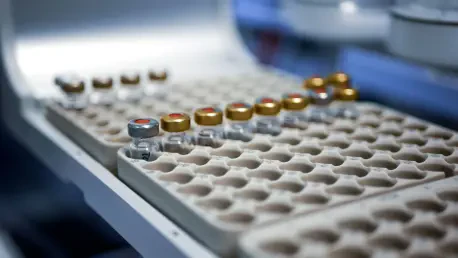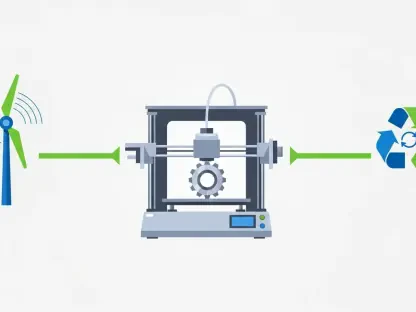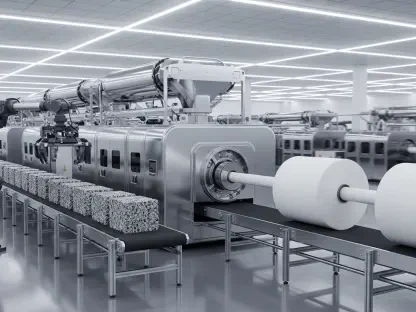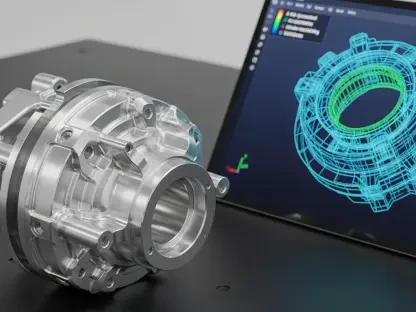In the past several years, the United States has witnessed a remarkable surge in investments from pharmaceutical giants as they seek to expand drug manufacturing facilities on American soil. This ambitious shift is largely influenced by geopolitical uncertainties and evolving market dynamics. A pivotal catalyst driving the transformation involves potential tariffs on pharmaceutical imports hinted at by previous U.S. administration policies, suggesting rates as high as 200%. This environment has prompted companies to reassess their global strategies and catalyzed a domestic manufacturing renaissance. With the U.S. becoming a focal point, industry leaders are recognizing the significant advantages of establishing robust manufacturing operations, especially as the demand surges in high-growth sectors like the GLP-1 market and tech-centered production requiring a skilled workforce. This positioning not only enhances the nation’s industrial capacity but reflects a strategic pivot designed to optimize supply chains, mitigate risks, and meet the accelerating healthcare demands globally.
Major Investments by Pharmaceutical Giants
The commitment to expand U.S. manufacturing capabilities is evident through the substantial investments made by several leading pharmaceutical companies. AstraZeneca, one of the world’s foremost contenders in the biopharmaceutical realm, announced an impressive $50 billion investment aimed at fortifying its production base across the U.S. This venture includes the establishment of a $4 billion drug substance facility in Virginia, part of a broader strategy to boost U.S.-based revenue streams as the company targets $80 billion in revenues by the end of the decade. AstraZeneca also plans to enhance its existing operations in Maryland, Indiana, Texas, and Massachusetts, reflecting its long-term vision to become a key player in American pharmaceutical manufacturing.
Biogen, another industry heavyweight, is similarly making ambitious strides to expand within the U.S. through an investment of $2 billion. Focused on augmenting its production capabilities, particularly for advanced therapeutic modalities like antisense oligonucleotides, Biogen’s strategy highlights a recovery path from recent controversies around its Alzheimer’s drug, Aduhelm. This move aims to reinvigorate its market presence amidst revenue challenges and diversify its therapeutic portfolio. Establishing new facilities in North Carolina’s Research Triangle Park, a renowned hub for innovation, underscores Biogen’s dedication to leveraging domestic strengths to rejuvenate its growth prospects.
Enhancing Manufacturing Capabilities
Thermo Fisher Scientific is another prominent player contributing to the expanding U.S. pharma landscape. By acquiring a sterile fill-finish site from Sanofi, Thermo Fisher bolsters its capabilities in supplying clinical research services, aligning with trends indicating rising demand for advanced production solutions. This acquisition is part of Thermo Fisher’s comprehensive $2 billion commitment to U.S. manufacturing, designed to support its robust growth strategy amid positive quarterly profits. With a deep-rooted focus on enhancing logistical efficiency and ensuring uninterrupted supply chains, this expansion illustrates Thermo Fisher’s alignment with industry-wide shifts toward domestic production and development.
These investments mirror a broad consensus within the pharmaceutical industry, reflecting a strategic push toward augmenting domestic capabilities amidst regulatory challenges and evolving market dynamics. As geopolitical landscapes shift and market pressures mount, pharmaceutical companies are converging toward a unified objective: establishing the U.S. as a leading hub for pharmaceutical production. This migration of manufacturing capabilities not only enhances the nation’s economic prospects but also underscores the industry’s readiness to adapt to new challenges while maintaining a steady focus on innovation and efficiency within their operations.
Strategic Implications and Future Outlook
In recent years, the United States has experienced a significant increase in investments from pharmaceutical companies looking to grow their drug manufacturing operations within its borders. This major shift is driven by geopolitical changes and evolving market trends. One key factor behind this transformation is the potential for tariffs on pharmaceutical imports, proposed by prior U.S. government policies, which could be as high as 200%. Such an environment has compelled companies to rethink their global strategies, igniting a resurgence in domestic drug production. As the U.S. emerges as a central hub, industry leaders increasingly see the benefits of building strong manufacturing infrastructure. This is especially important with growing demand in fast-expanding sectors like the GLP-1 market, and the technical production that requires a skilled labor force. By doing so, they not only boost the country’s industrial capacity but also strategically aim to enhance supply chains, reduce risks, and keep up with the growing needs of healthcare worldwide.









